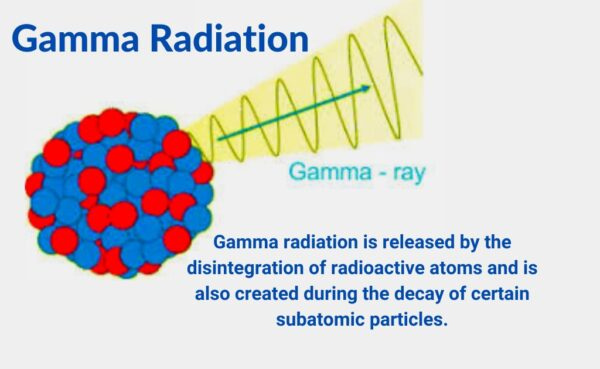Types of Radiation-Ionizing And Non Ionizing Radiation
An electromagnetic wave (beam) or particle is a form of radiation. Waves of radiation are generally invisible, do not weigh or smell, and have neither a positive nor a negative charge. A radioactive particle is also invisible but has weight (that’s why it’s called a particle) and may have a positive or negative charge.
Radiation waves (such as light and heat) can be seen and felt, while others (such as x-rays) require special instruments to detect. In this article, we will discuss the different types of radiation.
Types of Radiation
A source of radiation releases energy that travels through a medium until it is absorbed by matter. In accordance with their energy, they are classified as follows:
- Ionizing radiation
- Non-ionizing radiation
Ionizing Radiation
The interaction between ionizing radiation and matter produces ions at the molecular level. An atom becomes charged or ionized when electrons are removed from its orbit, thereby removing electrons from its orbit.
DNA can be damaged and proteins can be denatured if the interacting matter is a human body. Radiation that does not cause ionizing damage can still cause injury to humans, but generally, the damage is limited to thermal damage.
The different types of ionizing radiation are listed below along with a few of their characteristics:
Alpha Particles
Alpha particles, also known as alpha rays or alpha radiation, consisting of two protons and two neutrons combined into a single particle identical to the nucleus of a helium-4 atom. They are usually made using the alpha decay process but can be made in other ways as well.
They are used as smoke detectors. When smoke enters the detector, the number of alpha particles decreases and is detected by the siren. Americium 241 is an example of a smoke detector.
Beta particles
Beta particles, also known as beta rays or beta radiation, are energetic, fast-moving electrons or positrons emitted by the radioactive decay of atomic nuclei during beta decay.
There are two forms of beta decay, β⁻ decay and β⁺ decay, which produce electrons and positrons, respectively.
Gamma radiation
Gamma radiation, also known as gamma rays, is a type of penetrating electromagnetic radiation produced by the radioactive decay of atomic nuclei. It consists of the shortest wavelengths of electromagnetic waves, usually shorter than that of X-rays.

X-rays
X-rays, or more rarely x-rays, are penetrating high-energy electromagnetic radiation. Most X-rays have wavelengths in the 10 picometers to 10-nanometer range, corresponding to frequencies in the 30 petahertz to 30 Ahtz range and energies in the 145 eV to 124 keV range.
Non-Ionizing Radiation
Non-ionizing radiation is any type of electromagnetic radiation that doesn’t have enough energy per quantum to break the chemical bonds in atoms or molecules. These are some types of non-ionizing radiations.
UV radiation
UV radiation is a type of radiation that is emitted by the sun and other artificial sources, such as tanning beds. Some people have benefits from exposure to UV radiation, such as producing Vitamin D. However, UV radiation can also cause health risks. Our natural source of UV radiation is the sun.
Visible Light
The visible spectrum is the part of the electromagnetic spectrum that can be seen by humans. This range of wavelengths is called visible light or simply light. A person’s eye can see things from about 380 to about 750 nanometers.
Radio Waves
Electromagnetic radiation with a wavelength greater than infrared and a speed equal to light is known as radio waves. Long waves that blanket the earth and short waves that are bounced off in the ionosphere are some of the radio waves distinct frequency propagation characteristics.
Related FAQs
What type of radiation is xray?
X-ray machines pass x-ray beams (a form of ionizing radiation) through a part of the body to produce images of the tissue, organs, bones, or teeth inside.
Are gamma rays harmful?
Gamma rays are the most harmful external hazard. Beta particles can partially penetrate skin, causing “beta burns”. Alpha particles cannot penetrate intact skin. Gamma and x-rays can pass through a person damaging cells in their path.
How far can radiation travel?
Gamma rays can be emitted from the nucleus of an atom during radioactive decay. They are able to travel tens of yards or more in air and can easily penetrate the human body. Shielding this very penetrating type of ionizing radiation requires thick, dense material such as several inches of lead or concrete.

 written by
written by 





Leave a Reply